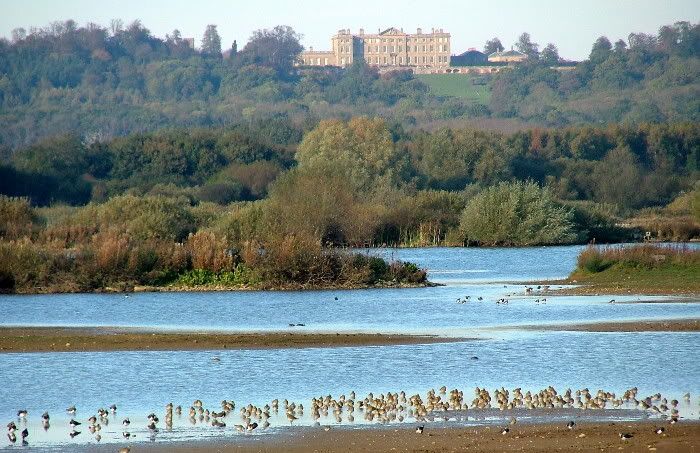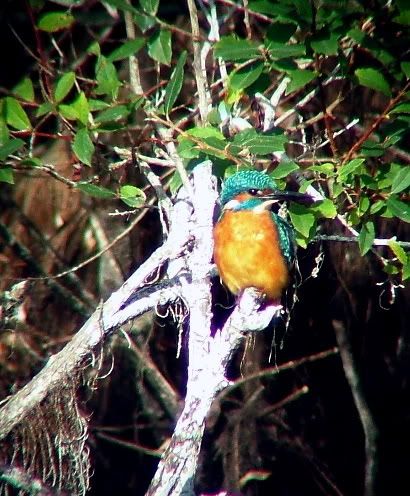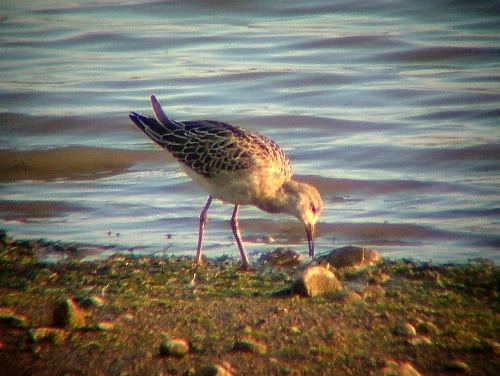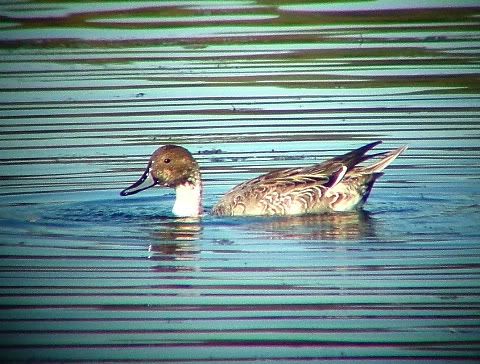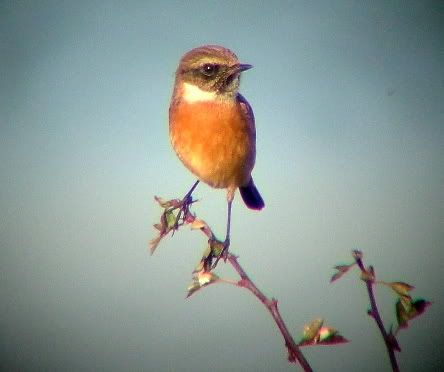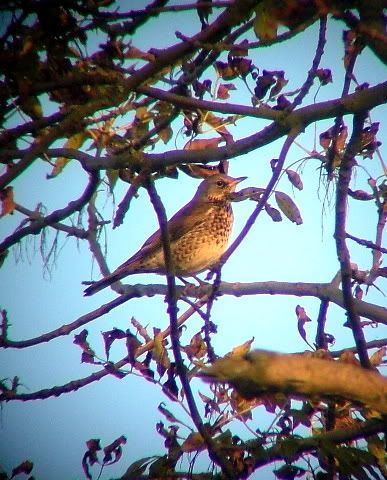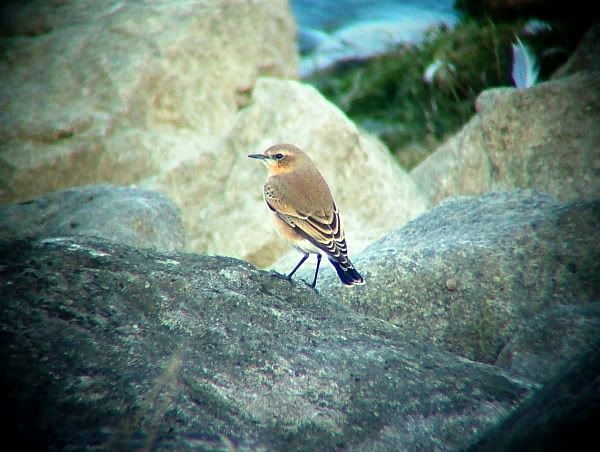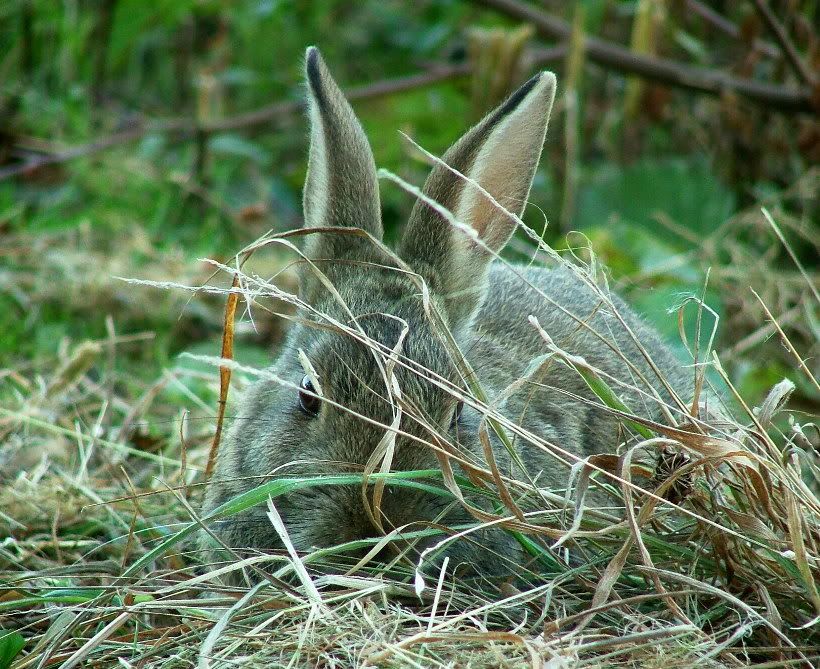Yesterday's events went well, Carsington again, this time Aren't Birds Brilliant x Feed the Birds Day, so all very busy and records broken for the number of names and addresses going into our visitor book. The girlfriend did a spot on job catching folks before they could leave the Wildlife Centre. She's the friendliest person in the world, you'd be a cold cold person to tell her you're not interested.
Bird-wise, highlight of the day had to be the Red-necked Grebe early on. It showed well for a while, even sailed close to a Dabchick for the ultimate comparsion and confirmation. Shame then that it was pushed away so early by a fisherman's boat, as it was never again seen for the rest of the day. Later I read a peeved comment in the log book of a hide further around the water noting how a number of fisherman had forced everything up the other end of the water. I'd feel uncomfortable about complaining though, the Severn Trent rangers do such a good job otherwise. It is the way of life that we should share reservoirs with other interests.
The other top notch bird was the Peregrine, with a spectacular display in front of the centre. First it sat sedately atop a distant electricity pylon, surveying the scene, and then action, the hunt. Off it took, all wildfowl scattered for dear life, and in came the Peregrine all muscle and streamlines, first stoop for a Lapwing - a miss, second for a Coot on the water - another miss, and back to the pylon. I kick myself now, but it was lunch break and I needed the loo. Of course, I come back later and learn it took a probable Teal right off the island in front. Damn!
Again, back to the pylon went the Peregrine to devour its catch, where we could show visitors the grizzly aftermath. The falcon is a steady show, at the moment you'll see one most days, and I'm glad because it's a good bird to talk to visitors about - fastest animal on earth and all that. One boy utterly agog at the 200mph stuff.
At the end of the day and in pouring rain, we drove to the Sheepwash car park to check up on a reported Black-necked Grebe, thinking how neat it is to say you saw 4 species of grebe in the day. To no avail (although I read one has been reported today) though, and instead we scored a Yellow-legged Gull, a 3rd-year bird - looks almost adult except it still has dirty pink legs and the black wing-tips are very large in flight - pictures below and very dark video here. Very languid it was too, lazy flight in amongst the busy flapping Black-headeds.
And the last to come in were at least 500 Jackdaw, perhaps many more, as big a flock as have ever seen, noisily commuting over Hall Wood.
 Yellow-leg...
Yellow-leg... ...with cormorant.
...with cormorant.Edited to add: Seems there has been some confusion with the grebe. To confirm on my part, I'm confident we had a Red-neck in the morning - the only question was over the fairly dark bill - which could suggest an autumn Slavonian, although bird club member with us confirmed Red-neck as suggested by the heavy bill and build of the grebe. Later in the day, we also had a visitor requesting ID help on a probable Black-necked Grebe he saw at the other end of the water, which he seemed certain had no reddish/warm at all, unlike the earlier bird. Then today, we have reports of a Slav Grebe!
So how many birds at we talking about here? 1, 2 or 3? Who knows? Seems unusual for all three to turn up like that. Two? Maybe. I may now get down to the ABB event on Tuesday, check for my own peace of mind the reported Slav, should it stay, isn't the bird we had on Saturday. Moulting autumn grebes, bigger headache than you'd think!
So how many birds at we talking about here? 1, 2 or 3? Who knows? Seems unusual for all three to turn up like that. Two? Maybe. I may now get down to the ABB event on Tuesday, check for my own peace of mind the reported Slav, should it stay, isn't the bird we had on Saturday. Moulting autumn grebes, bigger headache than you'd think!

